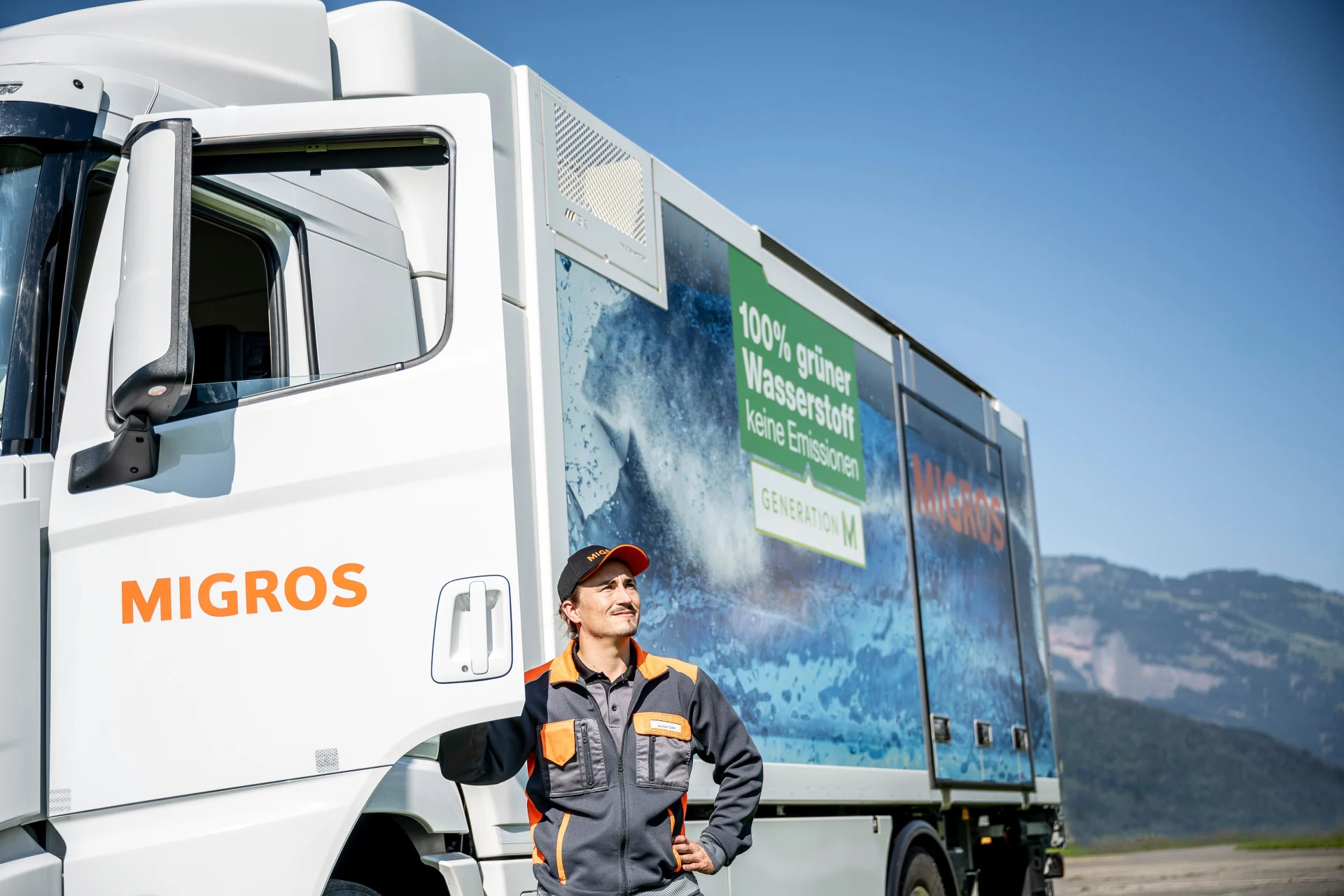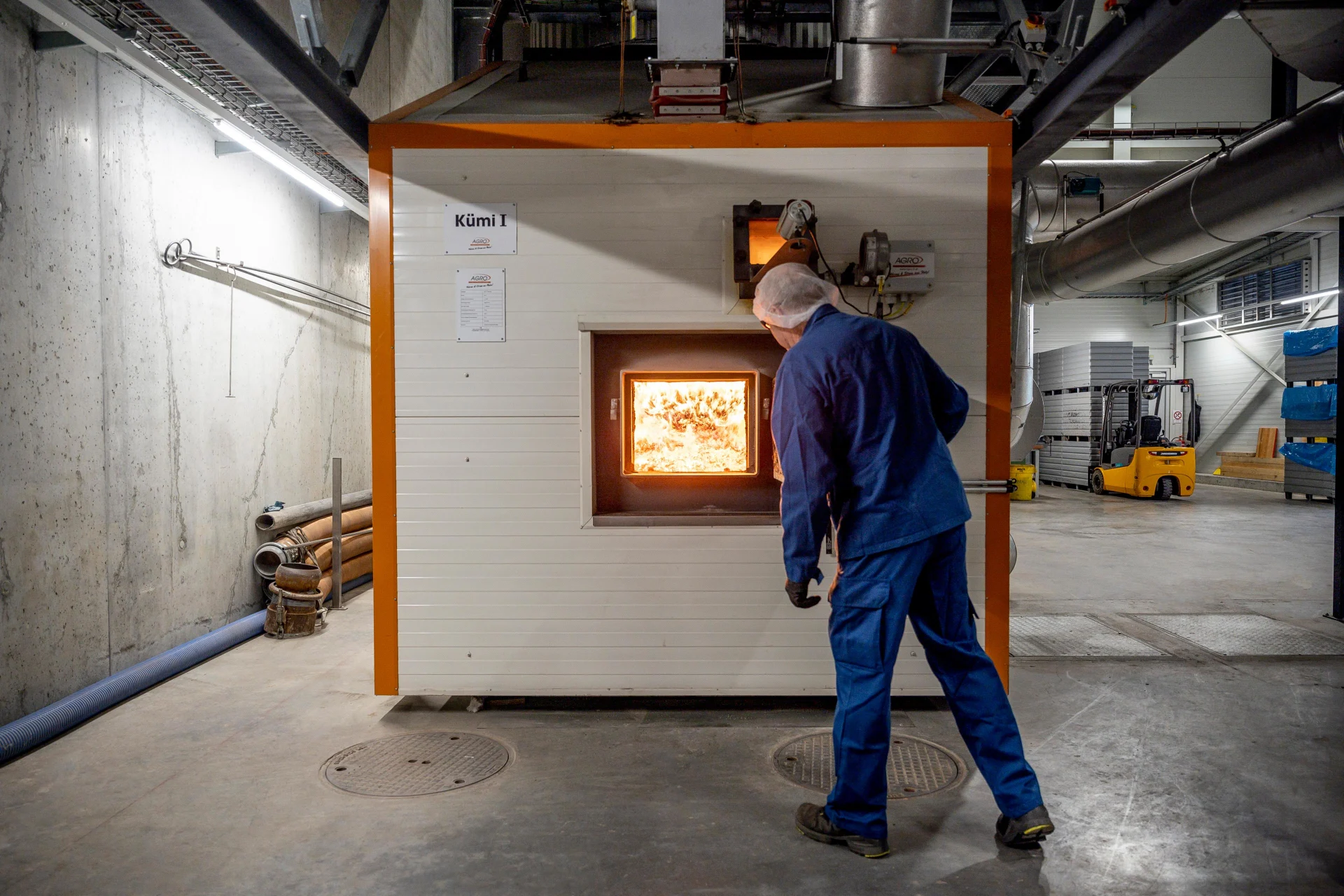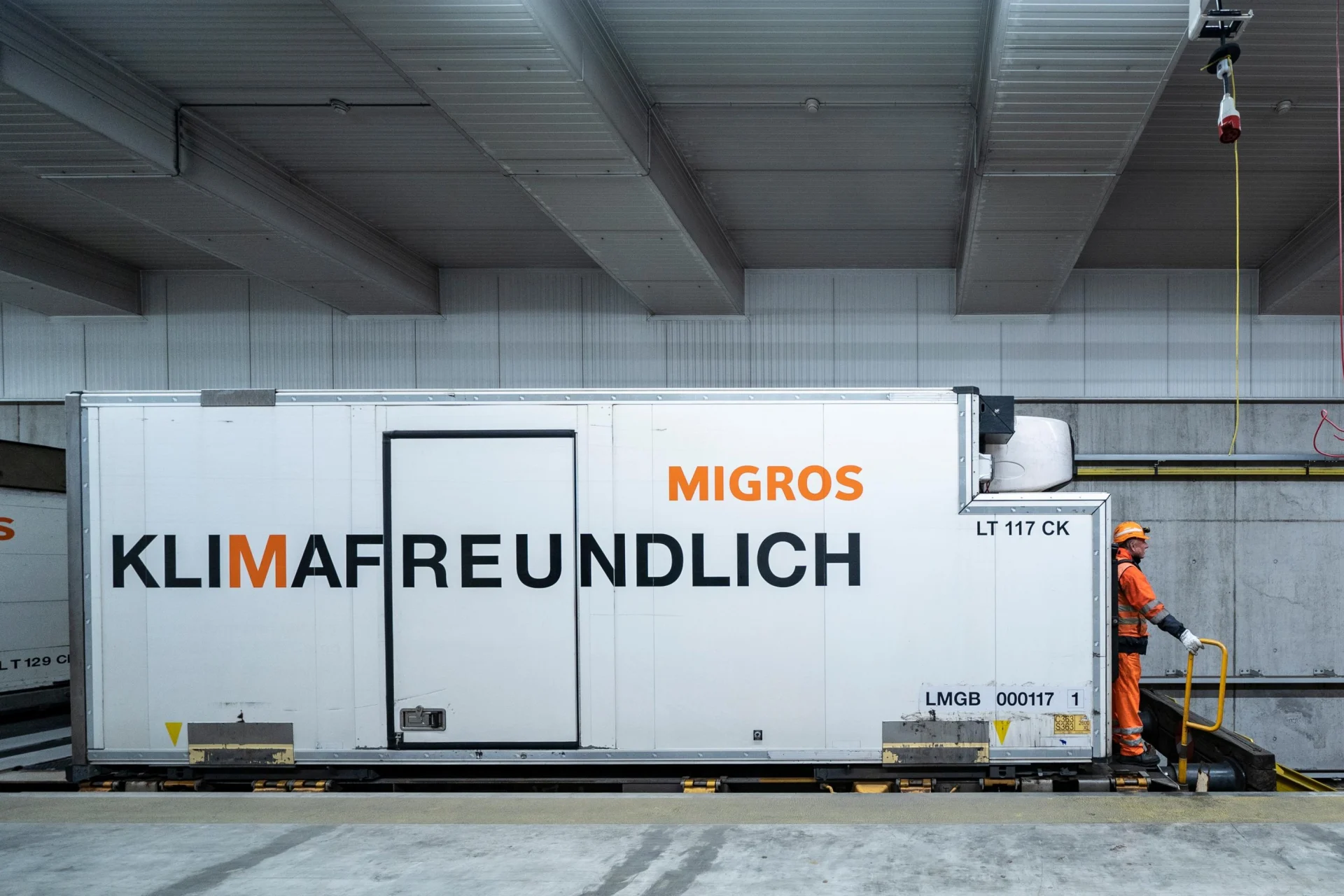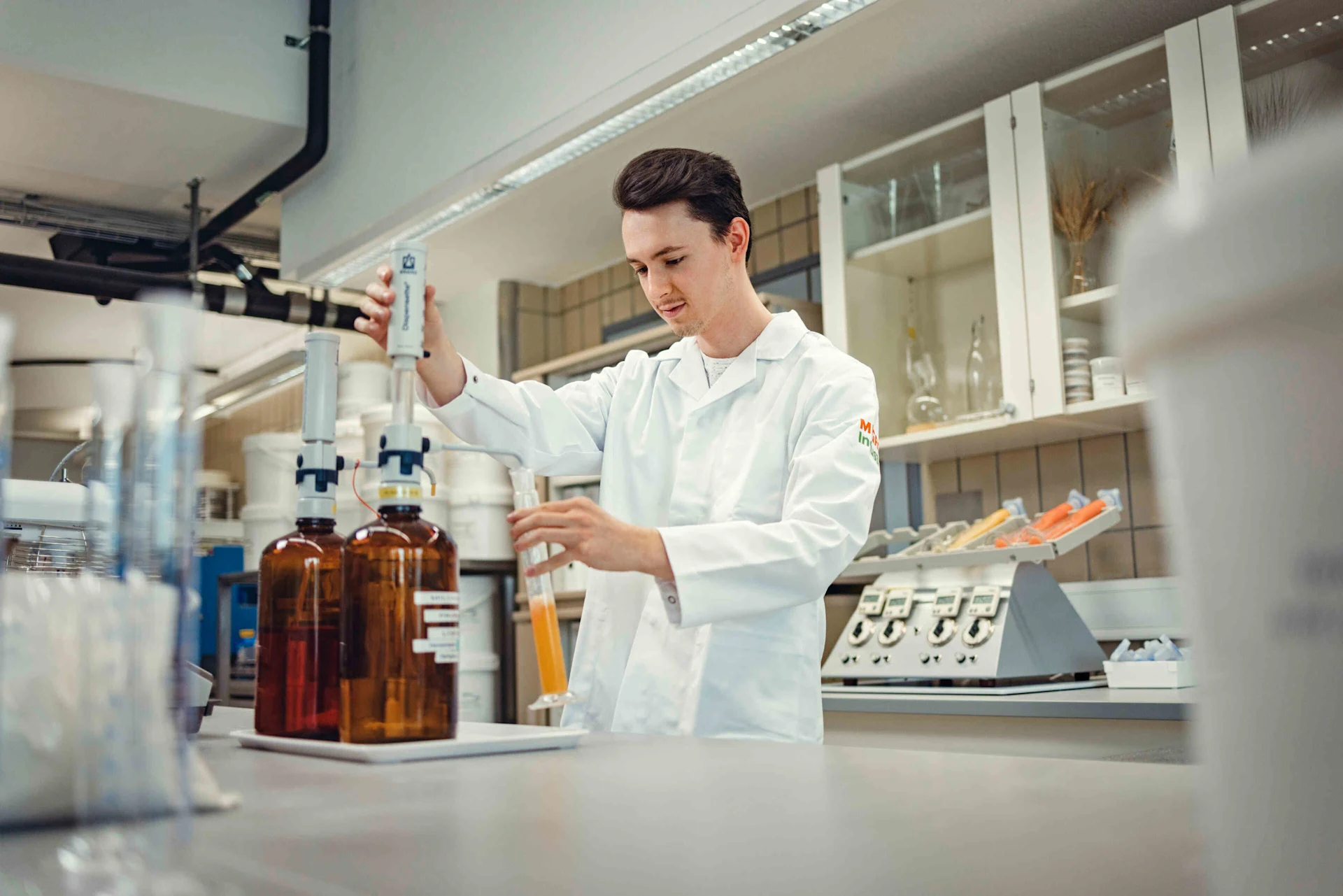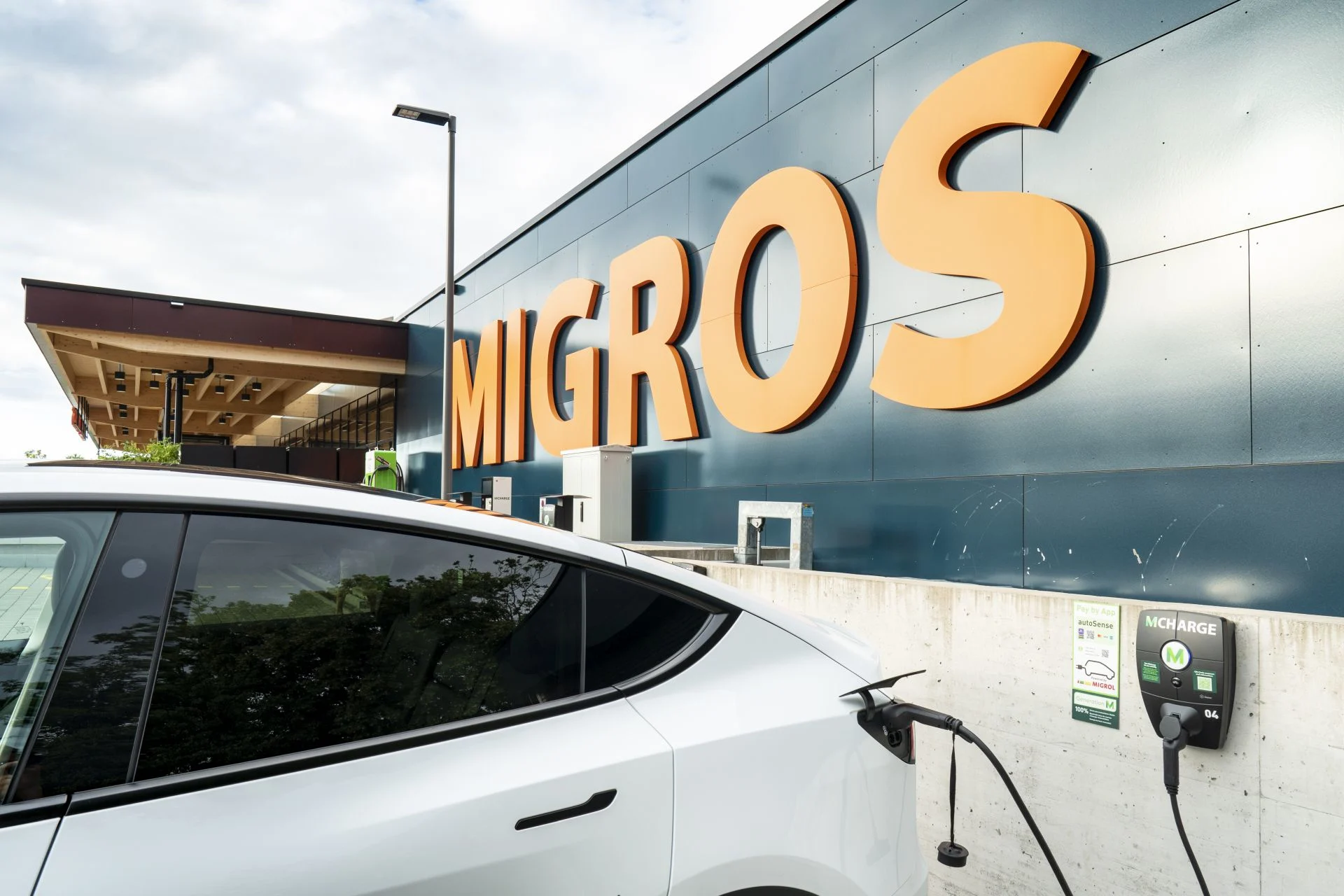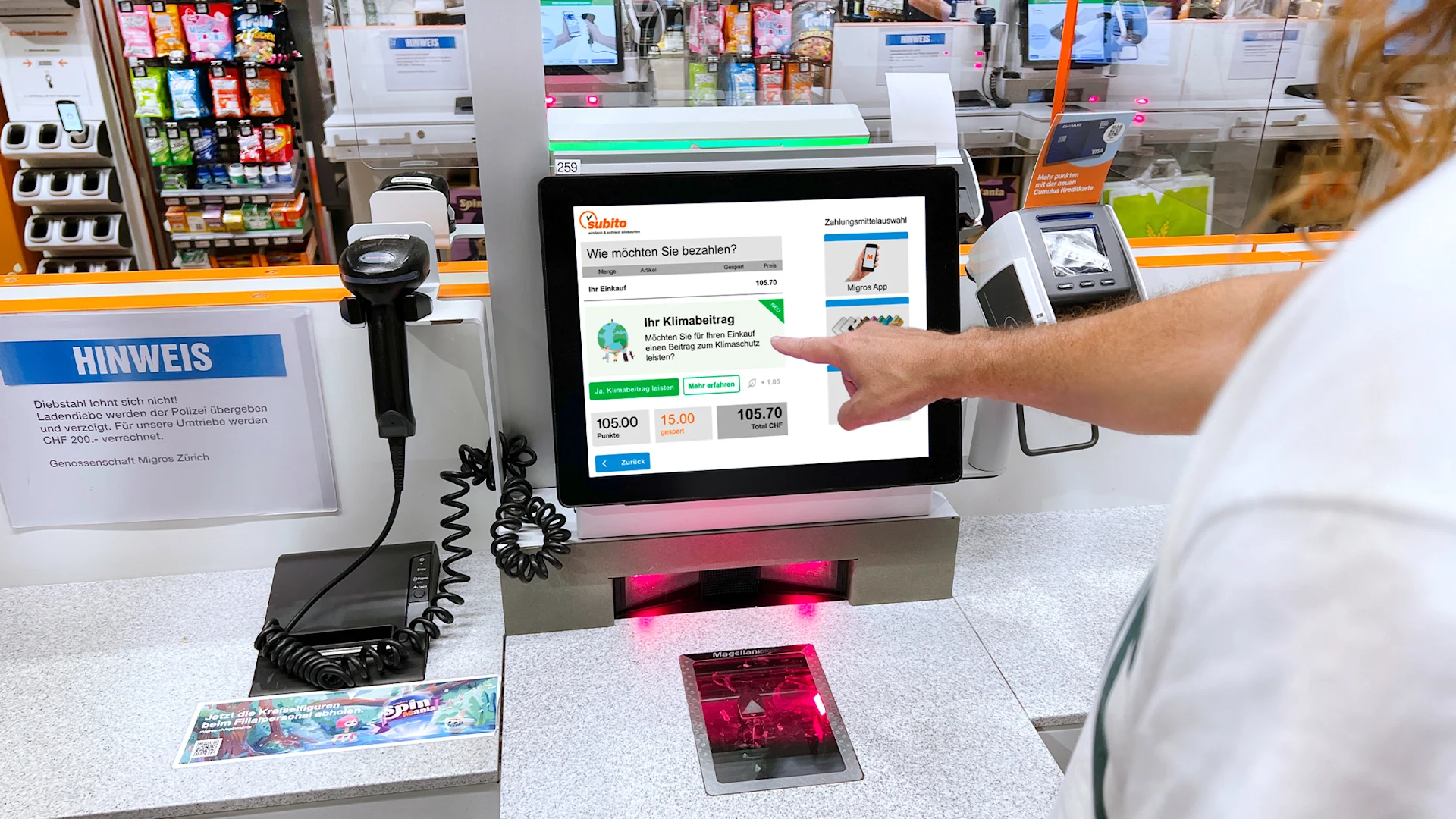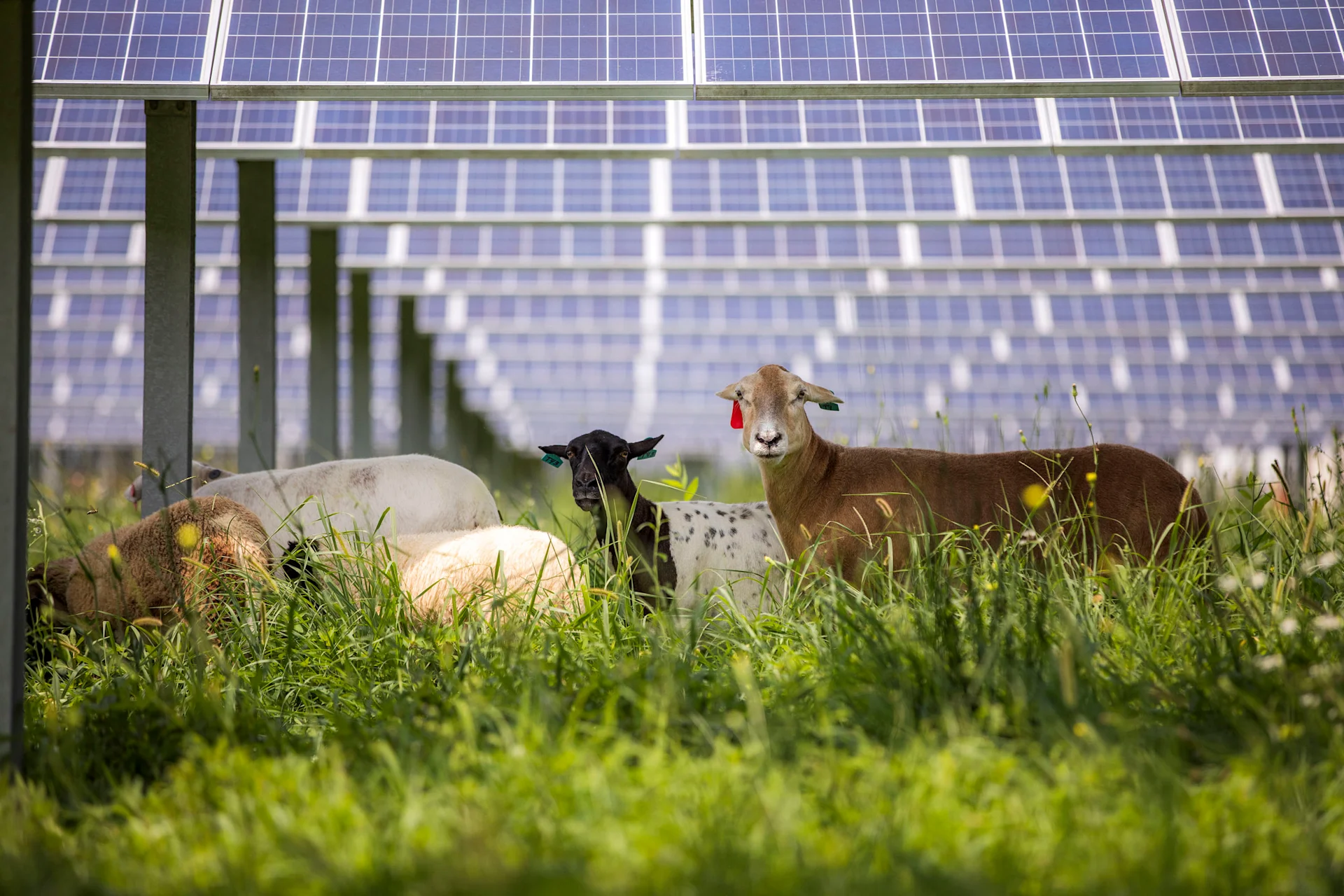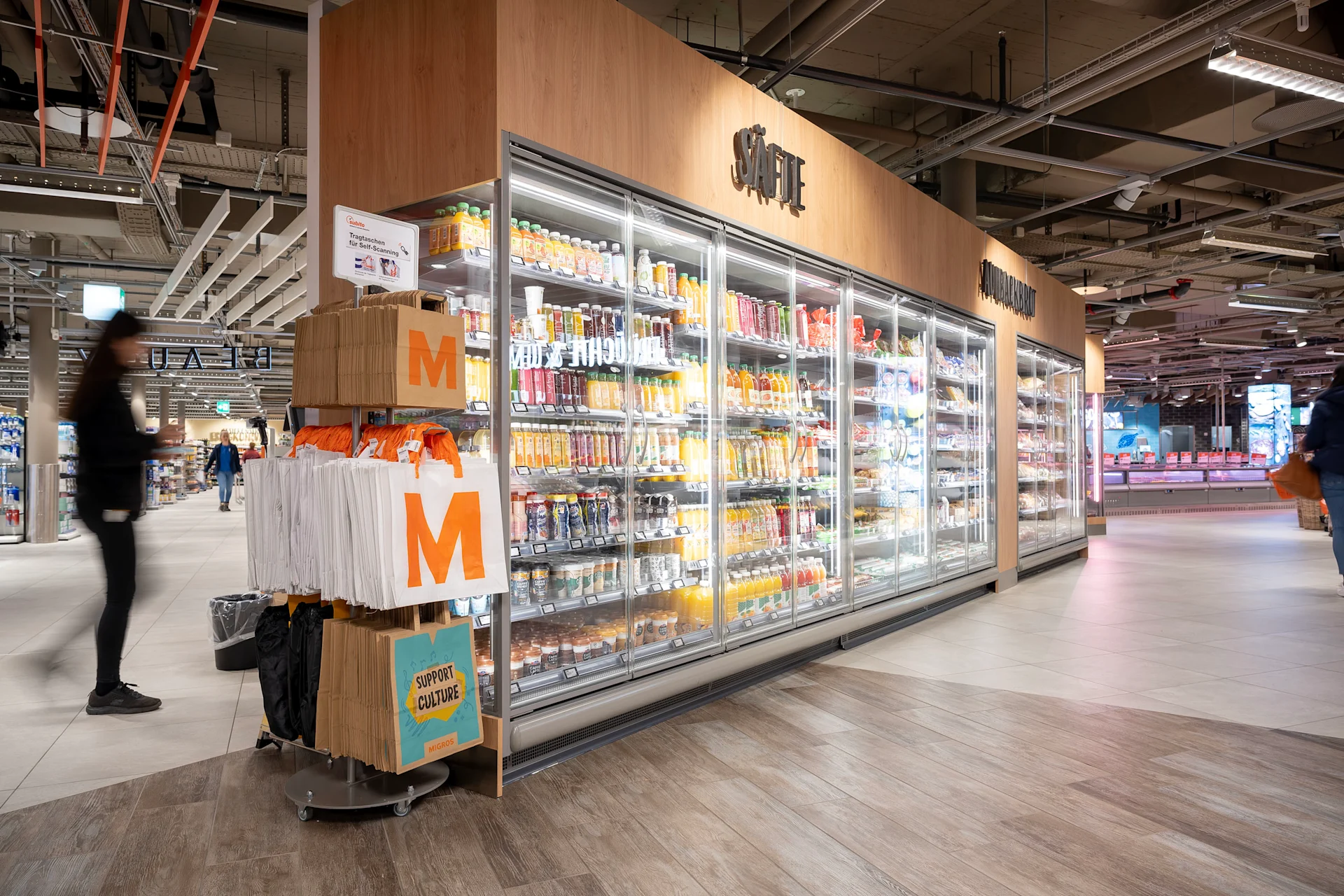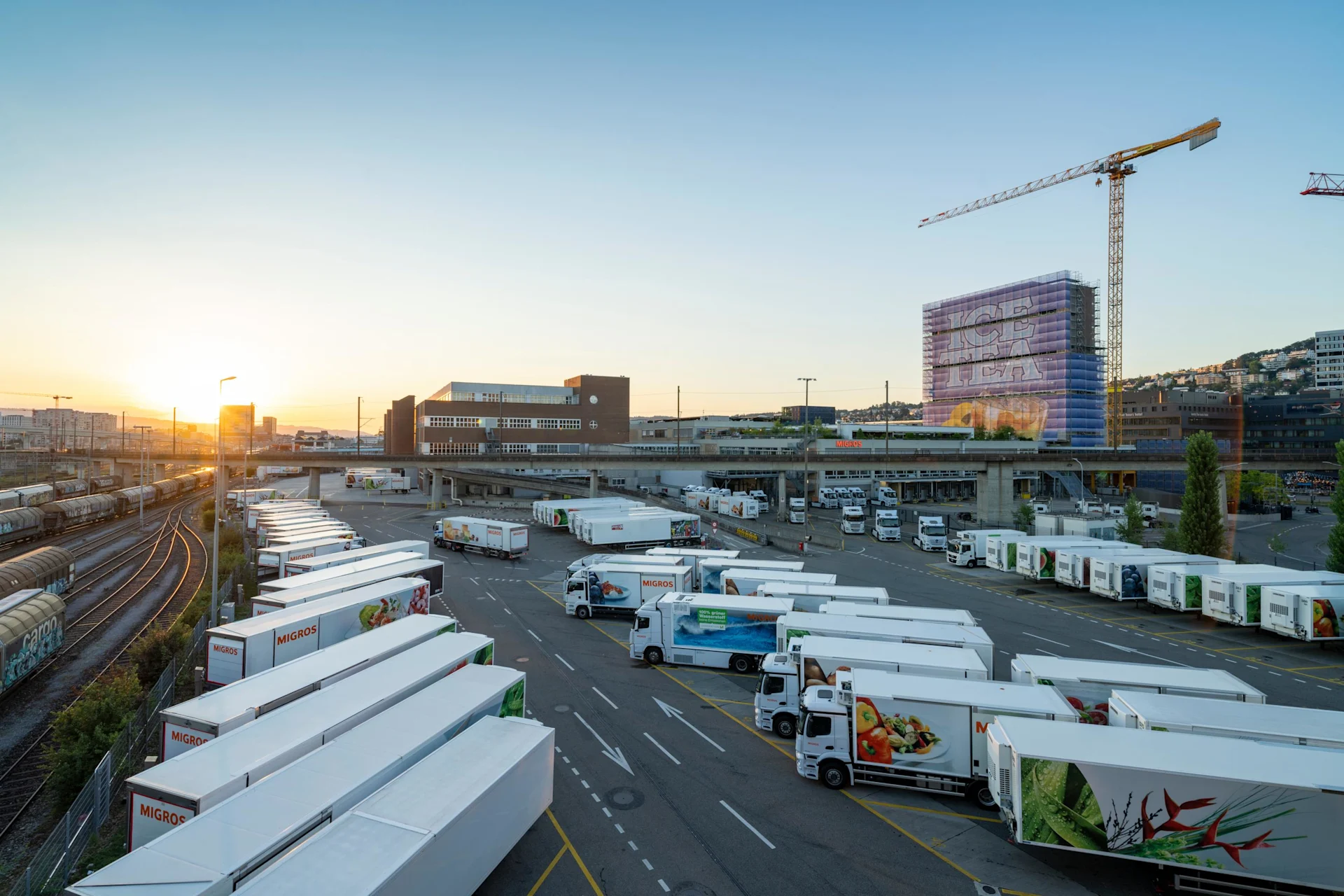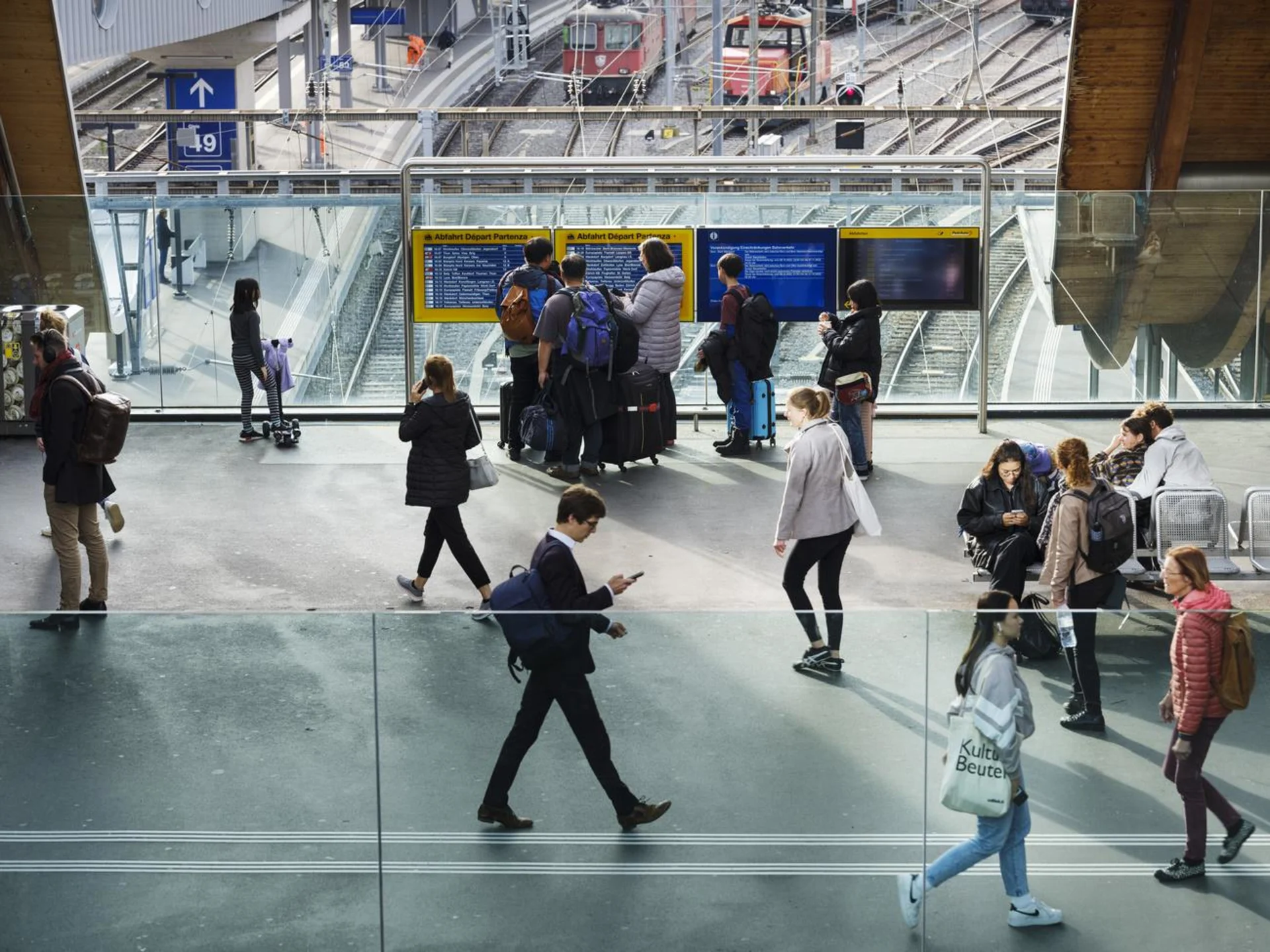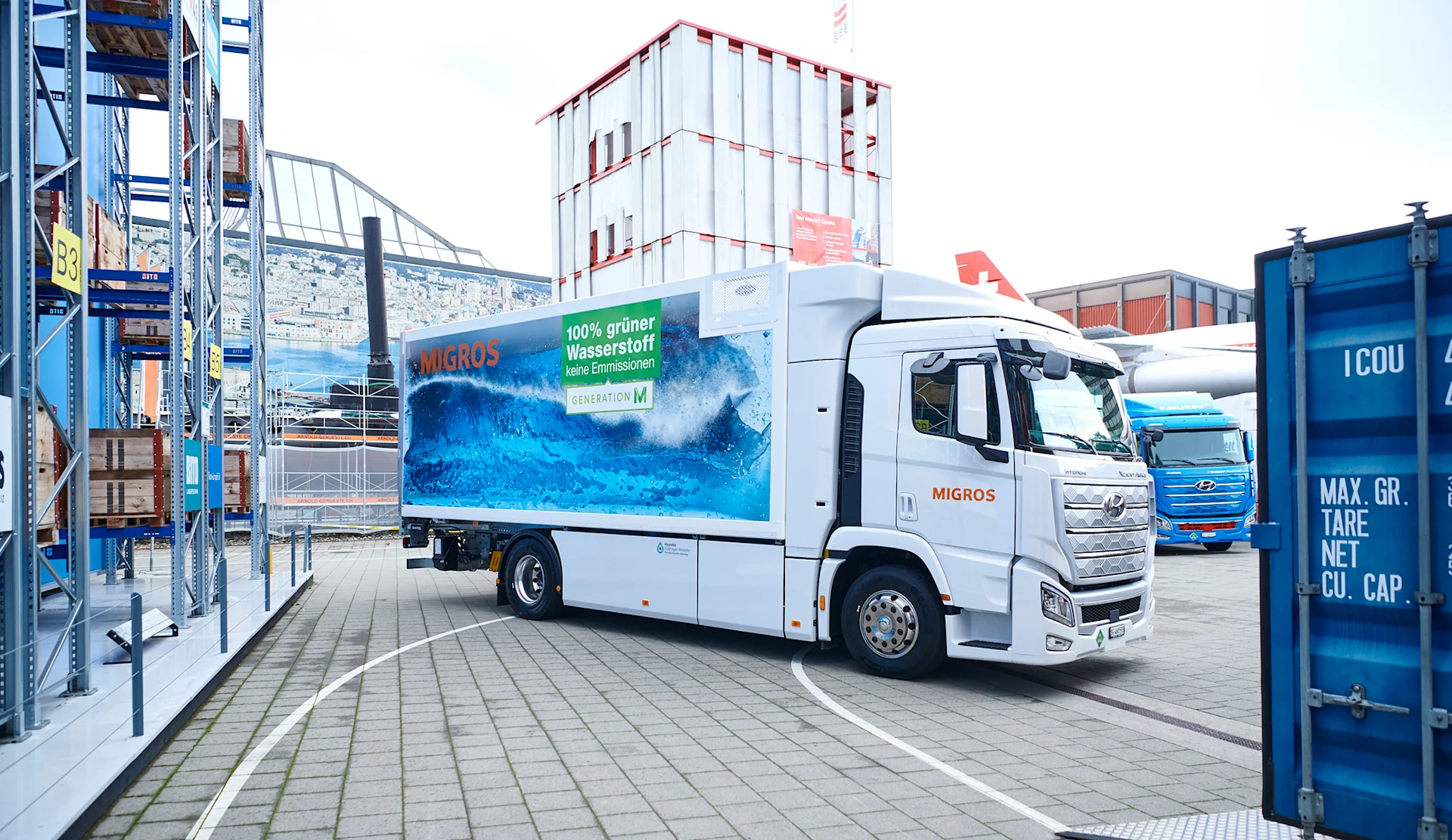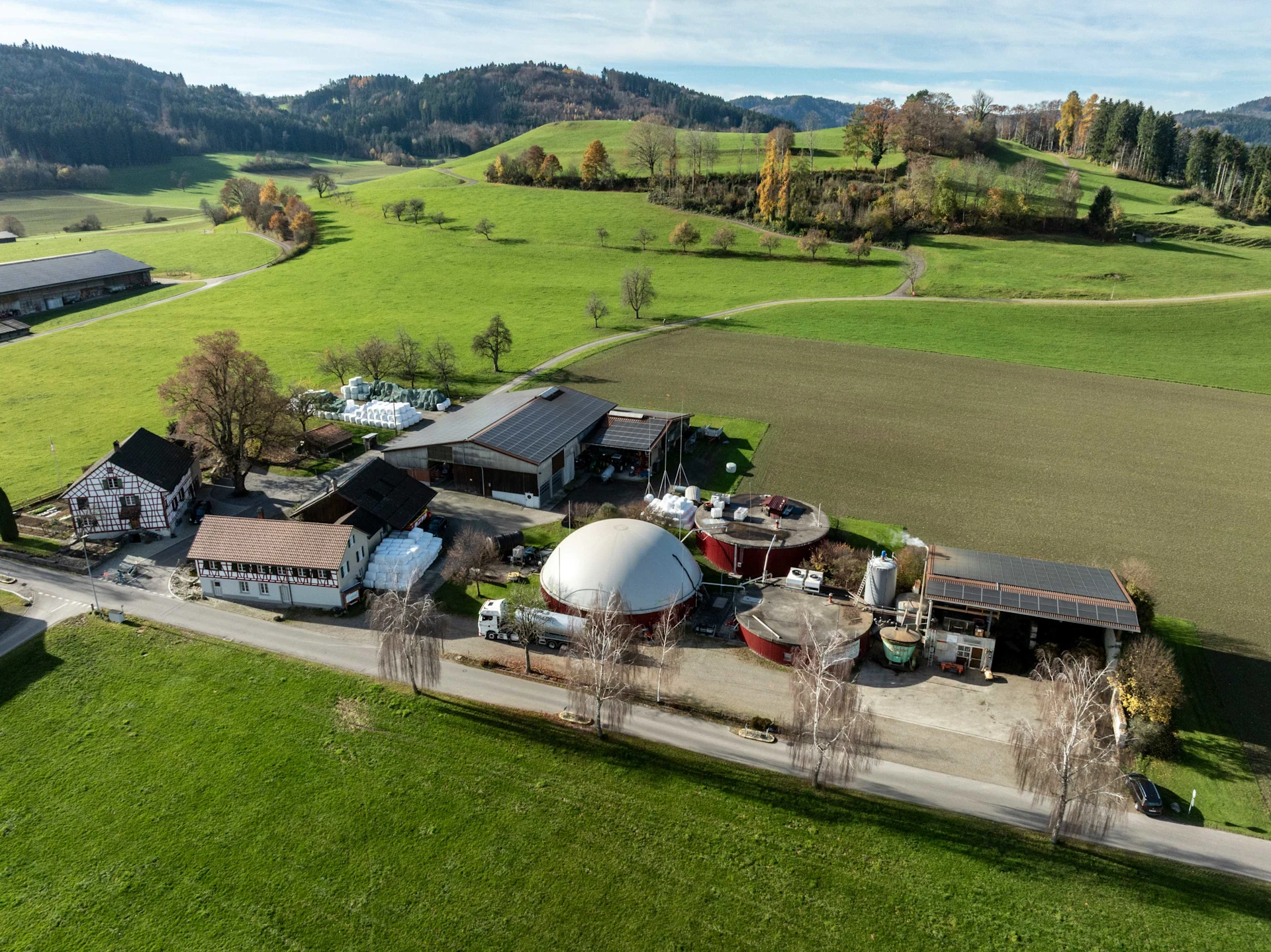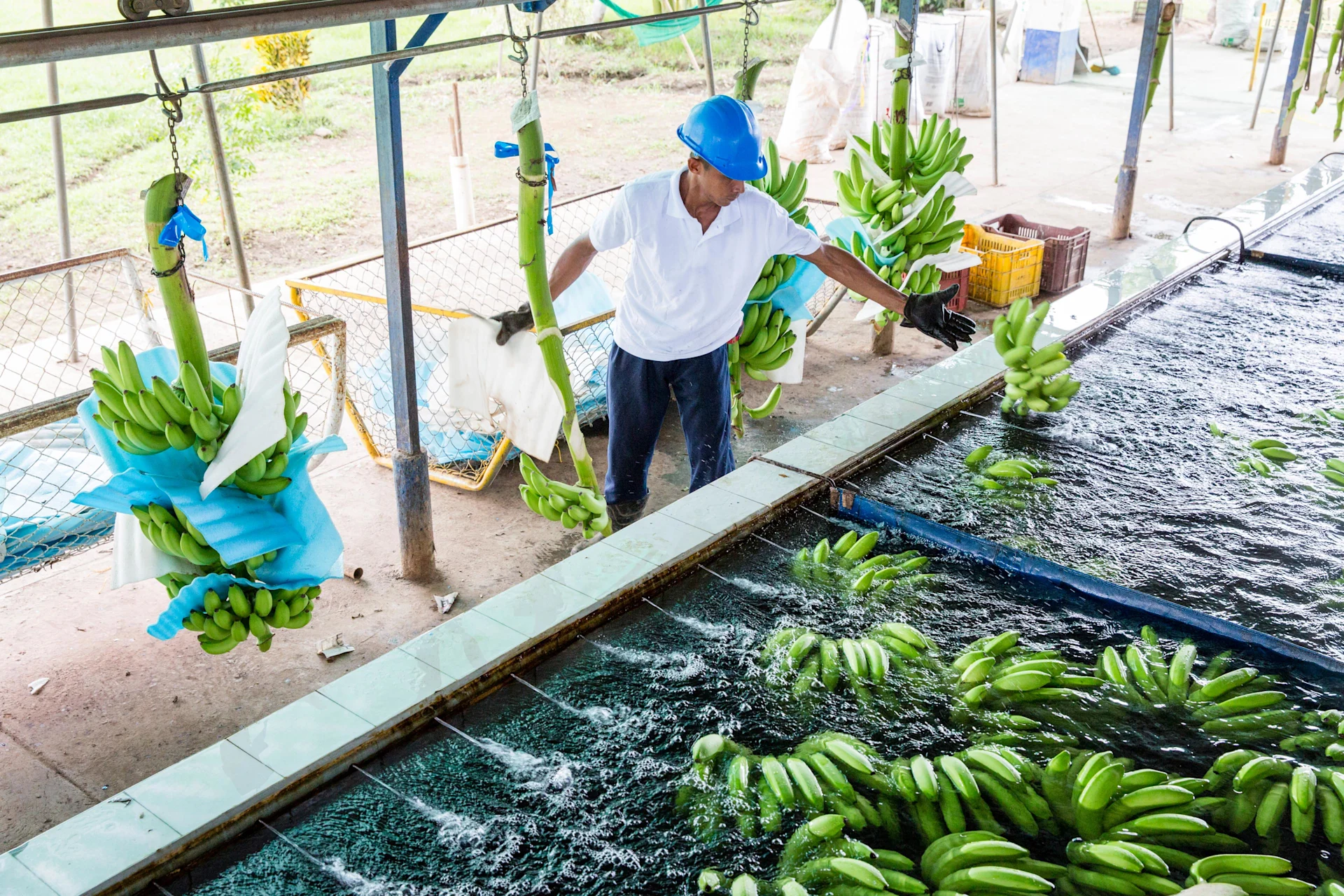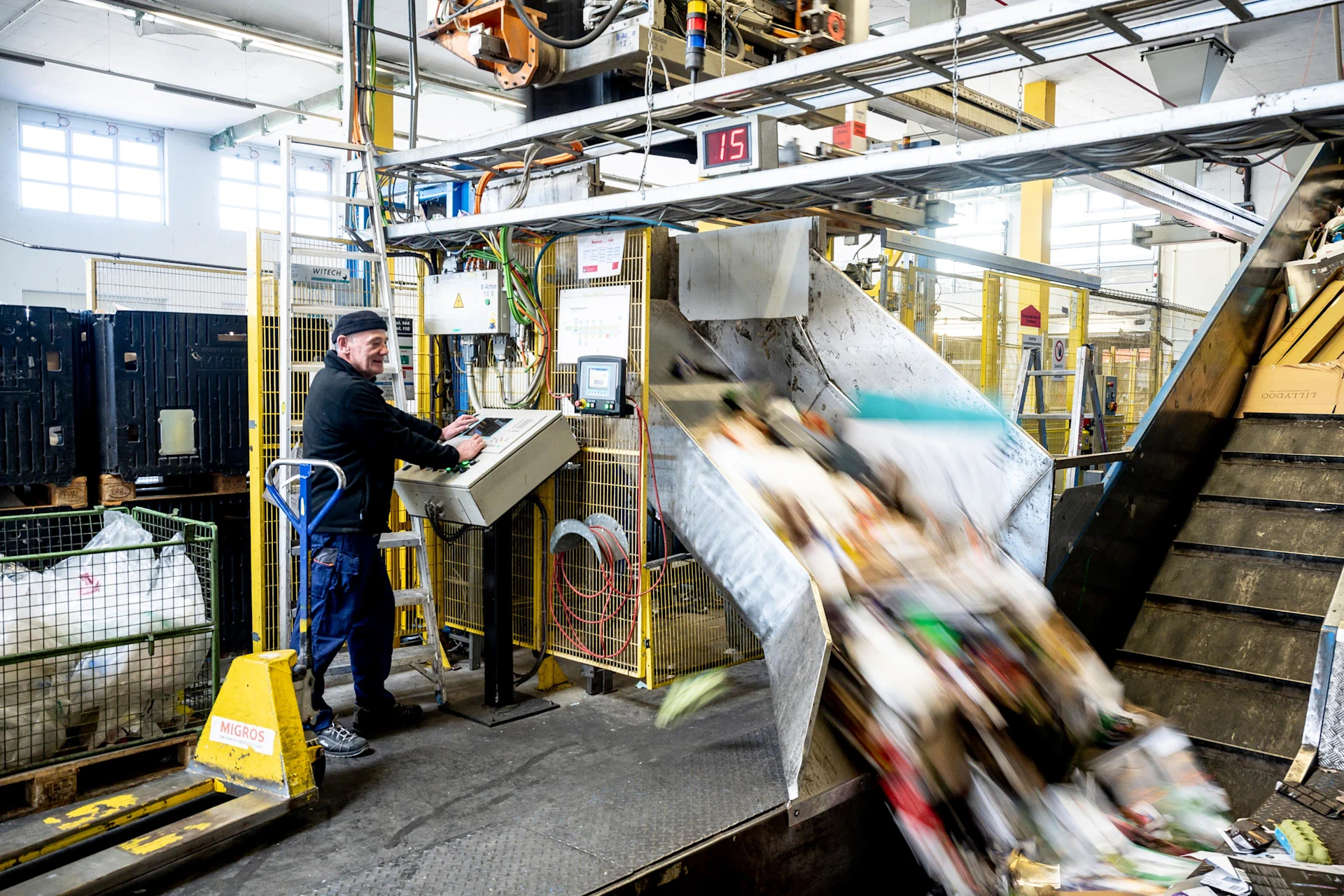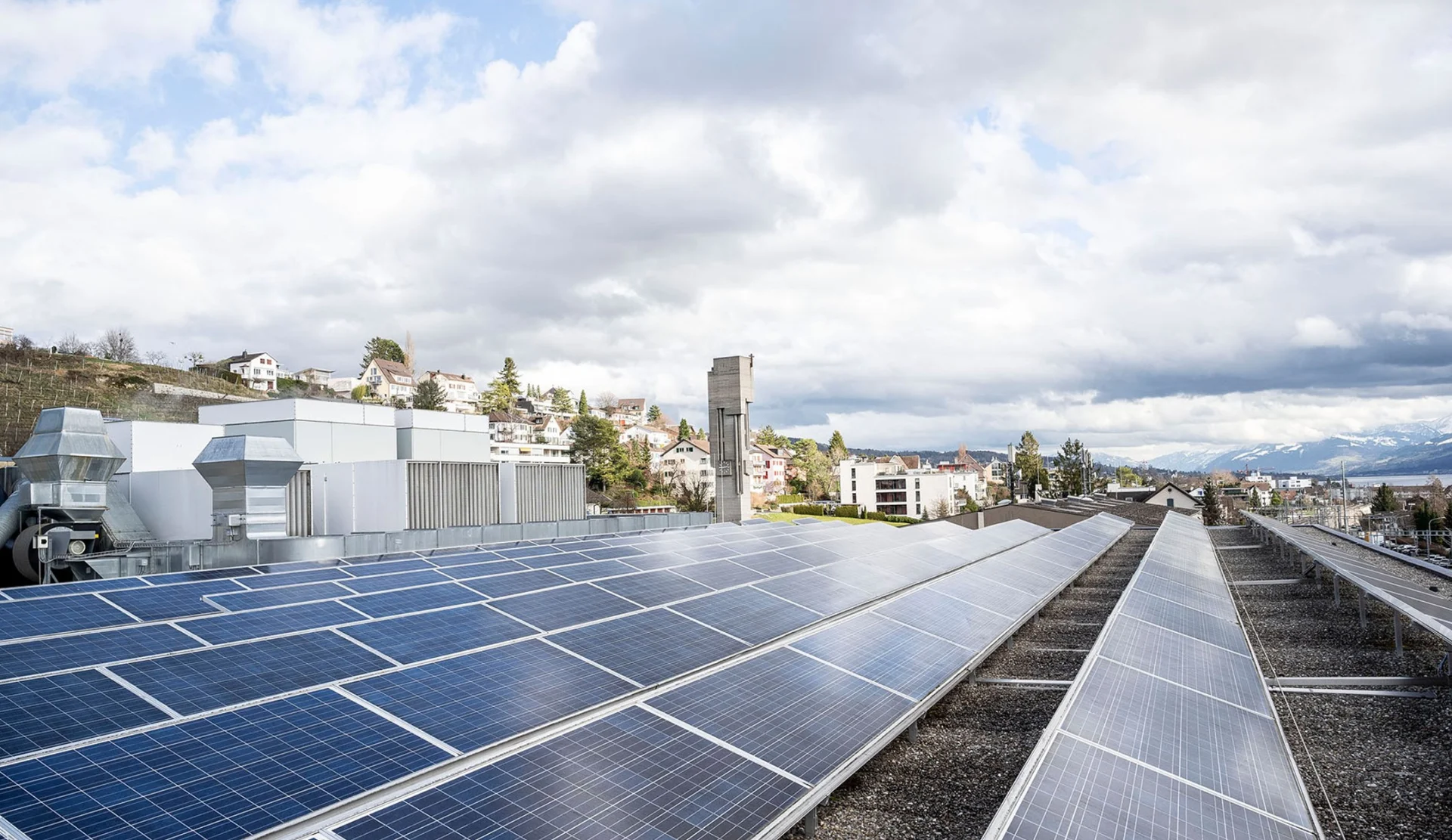Climate strategy
Climate & energy in 2020-2025
Reducing greenhouse gas emissions
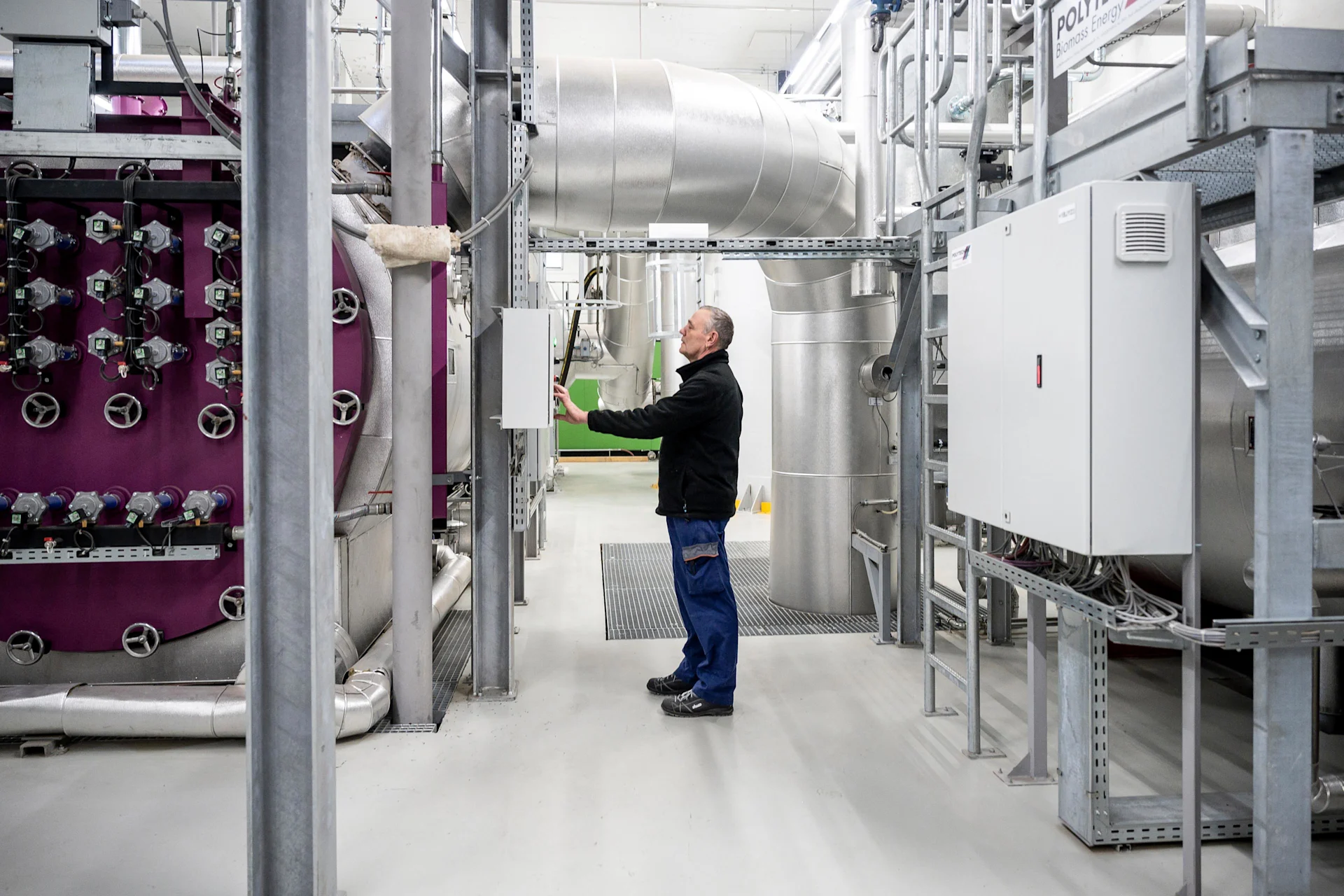
Since our various business areas have significant actual and potential impacts on the climate and energy availability, these topics are classified as highly relevant in our materiality analysis. On the basis of this analysis, we have set ourselves targets to reduce our negative impacts and maximise our positive ones.
Why we do this
Climate change refers to long-term changes in the Earth’s average temperatures and weather patterns. The current change is mainly caused by the increase of greenhouse gases in the atmosphere, particularly from the burning of fossil fuels such as coal, oil and gas, as well as from agriculture. These greenhouse gases, including carbon dioxide (CO2), methane and nitrous oxide, act as an insulating layer that traps the sun’s heat and warms the Earth’s surface. This phenomenon is called the “greenhouse effect”. The resulting global warming leads to many environmental, social and economic problems.
Negative effects of climate change
Global impact: Climate change affects not just individual countries or regions, but the entire world. It leads to rising temperatures, resulting in more extreme weather events, melting glaciers, rising sea levels and changes in ecosystems.
Health risks: Climate change can facilitate the spread of diseases and endanger people’s health by increasing heat waves, air pollution and water shortages.
Economic consequences: The economic impact of climate change is significant. Extreme weather events can lead to considerable damage, crop failures and the loss of infrastructure, resulting in massive costs.
Resource scarcity: Climate change can lead to water and food shortages as it affects agricultural production and damages natural resources such as forests, fish stocks and soil quality.
Social consequences: Climate change can contribute to people having to leave their homes due to environmental changes, which can lead to migration and potential conflicts. This affects human rights such as the right to freedom and security.
Biodiversity losses: Climate change threatens the diversity of flora and fauna and endangers entire ecosystems. Protecting the environment is therefore of great importance.
Where we cause the most emissions
As a large, cross-sector company, we generate greenhouse gas emissions along our entire value chain and thus contribute to climate change. We analyse our greenhouse gas emissions using three scopes in accordance with the methods of the Greenhouse Gas Protocol (GHG Protocol):
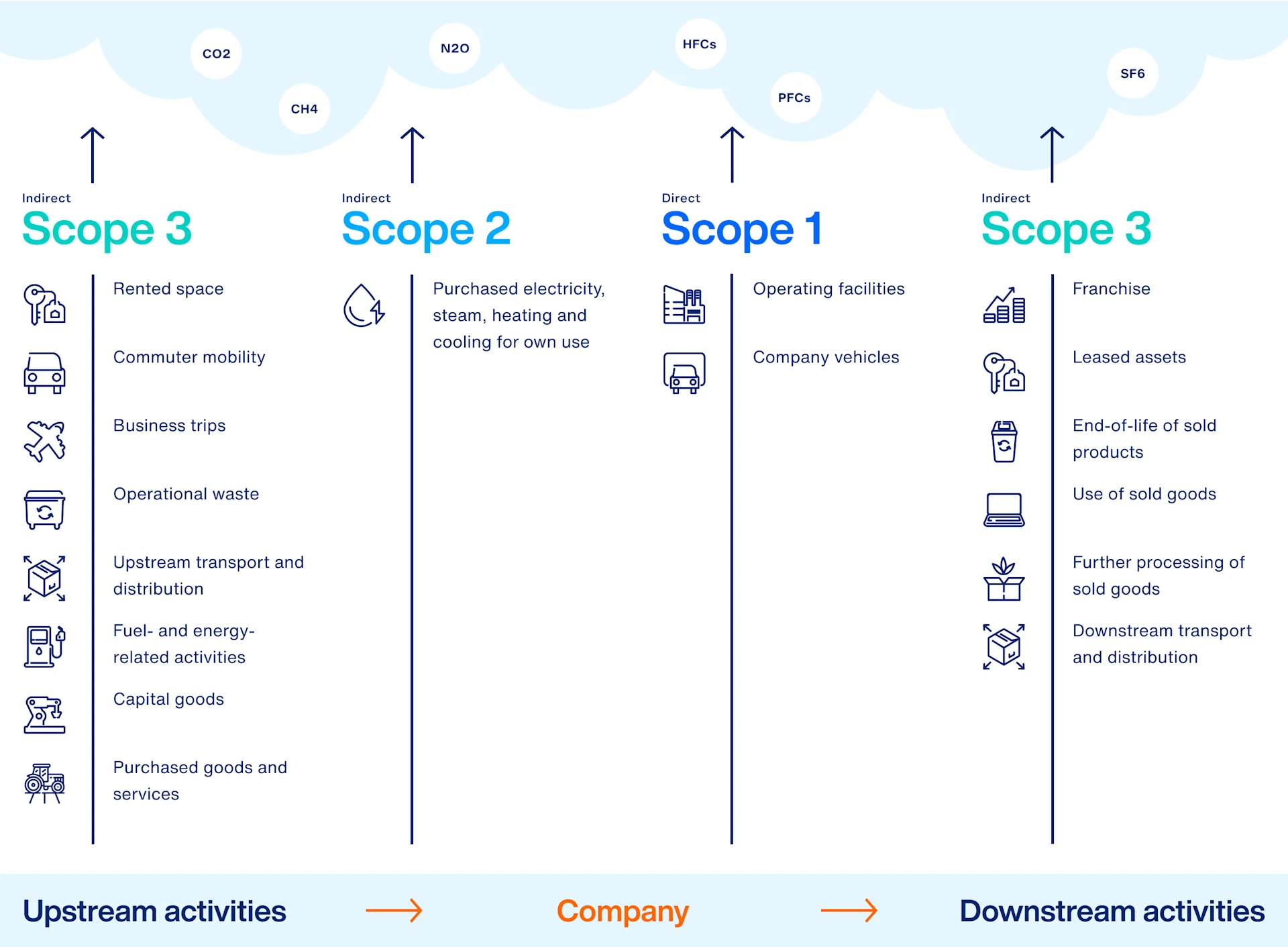
Our own operations (Scopes 1 & 2)
In our own operations (Scopes 1 & 2), greenhouse gas emissions are mainly caused by high energy consumption in production (Migros Industry), lighting, heating, cooling and ventilation systems. Optimised energy efficiency and the use of renewable energy sources are the key levers for reducing greenhouse gas emissions in Scopes 1 & 2. We also have an influence on the choice of drive for our own transport vehicles.
Upstream and downstream activities (Scope 3)
Looking at our overall greenhouse gas balance, the upstream and downstream activities are the most intensive in terms of emissions and energy consumption. Cooperative retailing mainly involves selling everyday products, which generate a lot of greenhouse gas emissions during production, especially in the area of agriculture (animal husbandry and land consumption) or during transport. The amount of waste and the type of packaging materials we use also have an impact on the amount of emitted greenhouse gases.
We are aware that the type of food that is consumed has a significant impact on greenhouse gas emissions. We take responsibility by actively promoting a plant-based diet and providing transparent information about the impact of our products. Examples of initiatives that support these efforts include our plant-based product line V-Love and M-Check.
How we aim to reduce greenhouse gas emissions
We are pursuing the 1.5 °C goal
In accordance with the Paris Climate Agreement, we are committed to limiting global warming to 1.5 °C. That is why we joined the internationally recognised Science Based Targets initiative (SBTi) in 2019 and have set science-based climate targets on the basis of our greenhouse gas balances. These were officially validated by SBTi in 2022.
In 2023, we supported the adoption of the Swiss Climate Protection Act at the federal level.
Our long-term goal is for the entire Migros Group to no longer emit any greenhouse gases by 2050.
We will reduce 90% of our total emissions, and 72% of agricultural emissions. The remaining emissions will be removed from the atmosphere through what is called “carbon capture” and permanently stored in the ground or in stone.
All of our companies have set ambitious milestones with a 2030 deadline to achieve this net-zero goal. The reference year for all goals is 2019, as 2020 was not representative in a 10-year comparison. Due to the Covid-19 pandemic in 2020, demand in stationary trade and online retail increased significantly. On the other hand, business areas such as travel, gastronomy and fitness and leisure activities suffered major losses. Since the level of greenhouse gas emissions in most business areas correlates with the demand for products and services, 2020 would not have been suitable as a reference year.
Our own operations (Scopes 1 & 2)
We have a direct influence on the reduction of greenhouse gas emissions across our own operations (Scope 1 & 2). For example, we can reduce our negative impact through technical measures in our own buildings, the behaviour of our employees and the use of alternative fuels in our own transport vehicles.
Our approaches
We are aiming for 100% renewable heat generation by 2040.
This means that we will no longer use any new fossil fuel heating systems. Existing and non-renewable heating systems will be replaced with, for example, waste heat recovery, heat pumps or wood-fired systems.We are aiming for 100% natural refrigerants in our cooling systems by 2040.
We set standards in cooperative retail trading in the areas of energy efficiency and rely on 100% renewable energies. We produce the electricity required for our own operations using our photovoltaic systems or obtain it from renewable sources (primarily hydropower).
We aim to use alternative drive technologies in all our truck fleets for the transportation of goods (distribution between operations centres and stores). These include, for example, renewably produced hydrogen, electric drives or biodiesel and biogas vehicles. Together with the Swiss Federal Laboratories for Materials Science and Technology (Empa), we have developed a digital tool that enables detailed analyses of our trucks’ energy consumption and CO₂ emissions. It also provides insights into which alternative drive technology is best suited for which route.
Our targets
Our targets are based on scientific methods and are compatible with the Paris Climate Agreement. Thanks to clear annual reduction paths, we can transparently measure target achievement and – where necessary – make corrections to our approach.
By the end of 2030, we will reduce our greenhouse gas emissions in Scopes 1 & 2 by 70% compared to 2019.
We will reduce our greenhouse gas emissions in cooperative retail trading by 80% compared to 2019 in our own operations and logistics by the end of 2030.
We will reduce our energy consumption in cooperative retail trading by 10% compared to 2019 in our own premises and logistics by the end of 2030.
The strategic priorities and goals are reviewed and adjusted if necessary as part of business changes in the Migros Group and revision of the Sustainability Strategy.
All targets in the field of “Own operations (Scopes 1&2)” follow the Sustainable Development Goals (SDG)
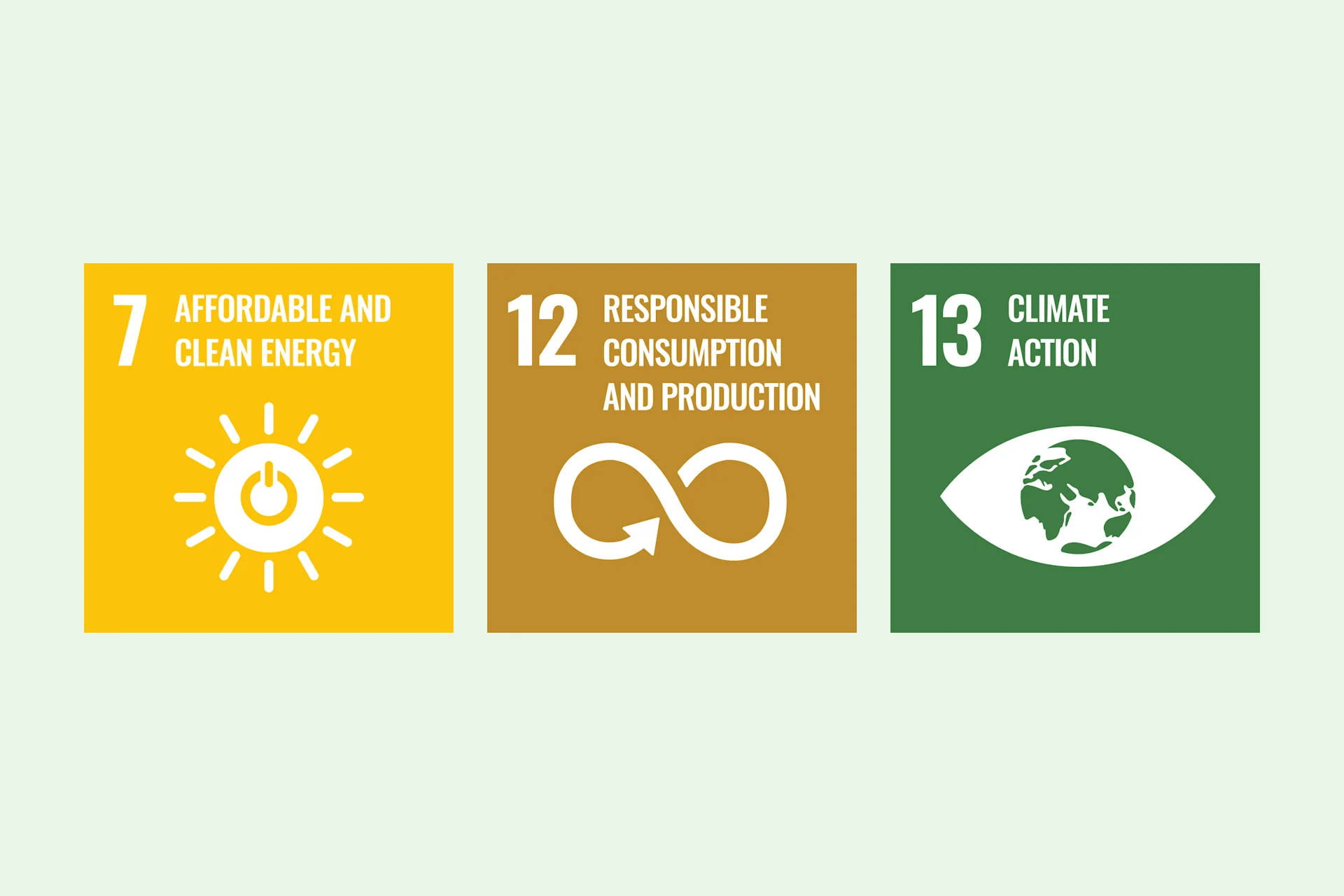
Our climate & energy targets follow SDGs 7, 12 and 13. Upstream and downstream value chain (Scope 3)
Scope 3 covers all emissions that occur in the upstream and downstream value chain. Within the Migros Group, the greatest emissions are generated in the supply chain: from growing the products to transporting them to stores.
Our approaches
We are reducing climate-relevant emissions in our value chain to the environmentally friendly level (planetary boundaries) in accordance with the Paris Climate Agreement.
We therefore developed science-based climate protection targets, we ensure transparency and, with the M Climate Fund, have a tool for financing the corresponding measures.We are committed to mobile-flexible forms of work and enable our employees to optimise their mobility mix in terms of time, costs and the environment when commuting to work and on business trips.
In the upstream value chain, we pursue three main approaches regarding the products and services we procure. Firstly, we would like to motivate as many of our suppliers as possible to achieve their own SBTi goals. Secondly, we are implementing direct reduction measures in our supply chain, e.g. with our commitment to deforestation-free and conversion-free supply chains. And thirdly, we are carrying out projects together with research institutions to make agriculture more climate friendly.
All Migros Group companies prioritise public transport for business trips, as set out in our expense regulations. We make climate contributions for essential business flights.
When transporting goods in our upstream value chain, we primarily rely on climate-friendly rail transport and combined transport (CT). In CT, the goods are transported by rail in swap containers or semi-trailers over the longest part of the route and only the initial and final kilometres are covered by road via low-emission trucks. Where rail or CT is not possible, we utilise trucks with the lowest possible emissions and alternative drive technologies. Where transport is organised by our suppliers, we support them in switching to trains instead of trucks. We avoid air transport whenever possible and only choose this transport option when absolutely necessary (e.g. for fresh and perishable products such as fresh meat, asparagus or mangos).
In the downstream value chain, we rely on transparency regarding the climate compatibility of our products and give our customers a direct opportunity to make a voluntary climate contribution to offset the CO2 emissions of their purchase.Our targets
Our targets are based on scientific methods and are compatible with the Paris Climate Agreement. They were validated by SBTi for the first time in 2022. Our specific target for agricultural emissions (FLAG) and our net-zero target are currently still under review. Thanks to clear annual reduction paths, we can transparently measure target achievement and – where necessary – make corrections to our approach.
We aim to cut agricultural emissions (FLAG) in our supply chains by 33.3% by 2030 and by 72% by 2050 compared to 2019.
By the end of 2026, 67% of the Migros Group’s non-agricultural emissions (non-FLAG) from procured goods will be covered by science-based reduction targets set by our suppliers.
By the end of 2030, we will reduce the Migros Group’s absolute Scope 3 emissions in the “Upstream transport & distribution” category by 27.5% compared to 2019.
By the end of 2030, we will reduce the Migros Group’s absolute Scope 3 emissions in the “Use of sold goods” category by 27.5% compared to 2019.
By the end of 2030, we aim to reduce greenhouse gas emissions from the use of the fossil fuels we sell by 46.2% compared to 2019.
By the end of 2026, 75% of non-agricultural emissions (non-FLAG) in cooperative retail trading will be covered by the science-based reduction targets of our suppliers.
By the end of 2030, we will reduce greenhouse gas emissions from upstream and distribution transportation in the cooperative retail trading segment by 59.3% compared to 2019.
The strategic priorities and goals are reviewed and adjusted if necessary as part of business changes in the Migros Group and revision of the Sustainability Strategy.
All targets in the field of “Upstream and downstream value chain (Scope 3)” follow the Sustainable Development Goals (SDG)
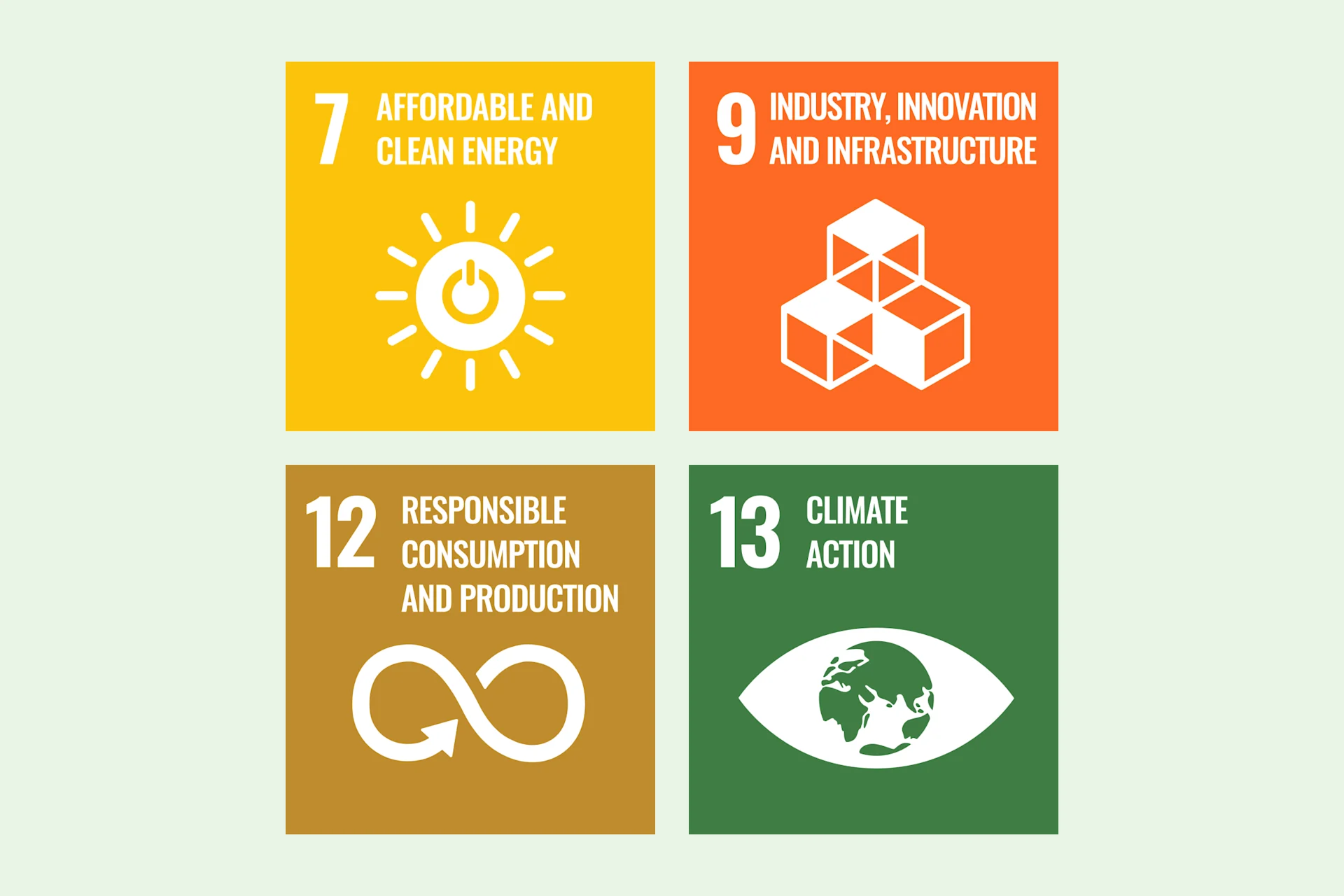
Our climate & energy targets follow SDGs 7, 9, 12 and 13.
Background information
What we do for the climate
We are acting now – for the climate and for you. Find out exactly what we are doing in our Stories.

